Showing Spotlights 289 - 296 of 2784 in category All (newest first):
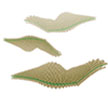 Decades of research on transition metal borides (TMBs) and their phases have led to a novel class of 2D transition metal borides termed MBenes - the boron-analogues of MXenes. Due to the very early stage of development, little is known about MBenes' physical and chemical properties, although excellent mechanical, electronic, metallic/semiconducting, capacitive, and thermoelectric properties have been theoretically predicted for them. However, even the most accurate theoretical predictions and optimistic predictions demonstrating MBenes' outstanding physical properties cannot be realized if researchers are not able to experimentally synthesize them - something the research community still is waiting for.
Decades of research on transition metal borides (TMBs) and their phases have led to a novel class of 2D transition metal borides termed MBenes - the boron-analogues of MXenes. Due to the very early stage of development, little is known about MBenes' physical and chemical properties, although excellent mechanical, electronic, metallic/semiconducting, capacitive, and thermoelectric properties have been theoretically predicted for them. However, even the most accurate theoretical predictions and optimistic predictions demonstrating MBenes' outstanding physical properties cannot be realized if researchers are not able to experimentally synthesize them - something the research community still is waiting for.
May 26th, 2022
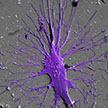 We are in the early stages of neural computing and have time to think through the ethical issues involved. Among other things, if neural computers become common, we will grapple with tissue donation issues. Scientists have found that human neurons were faster at learning than neurons from mice. Might there also be differences in performance depending on whose neurons are used? Might Apple and Google be able to make lightning-fast computers using neurons from our best and brightest today? Would someone be able to secure tissues from deceased genius's like Albert Einstein to make specialized limited-edition neural computers?
We are in the early stages of neural computing and have time to think through the ethical issues involved. Among other things, if neural computers become common, we will grapple with tissue donation issues. Scientists have found that human neurons were faster at learning than neurons from mice. Might there also be differences in performance depending on whose neurons are used? Might Apple and Google be able to make lightning-fast computers using neurons from our best and brightest today? Would someone be able to secure tissues from deceased genius's like Albert Einstein to make specialized limited-edition neural computers?
May 24th, 2022
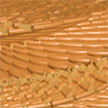 Researchers have designed and fabricated a bio-inspired, high strength and high toughness lignocellulose-based material that can serve as a 'wood armor' that rivals the performance of conventional engineering materials such as glass, ceramics or alloys. This wooden armor has biomimetic flexible-rigid layered Bouligand-like structures similar to the scales of pirarucu, a fish that can withstand piranha attacks. In ballistic tests it withstood 9 mm caliber bullets with an impact velocity of 214 meters per second.
Researchers have designed and fabricated a bio-inspired, high strength and high toughness lignocellulose-based material that can serve as a 'wood armor' that rivals the performance of conventional engineering materials such as glass, ceramics or alloys. This wooden armor has biomimetic flexible-rigid layered Bouligand-like structures similar to the scales of pirarucu, a fish that can withstand piranha attacks. In ballistic tests it withstood 9 mm caliber bullets with an impact velocity of 214 meters per second.
May 24th, 2022
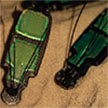 3D printing with stimuli-responsive materials is called 4D printing. 4D printing enables 3D printed structures to change its configurations over time and is used in a wide variety of fields such as soft robotics, flexible electronics, and medical devices. The development of a water-responsive cholesteric liquid crystal ink and the accompanying direct ink writing (DIW) procedure is extending 4D printing to structurally colored inks. This is the first demonstration of a humidity-responsive color changing ink for extrusion 3D printing.
3D printing with stimuli-responsive materials is called 4D printing. 4D printing enables 3D printed structures to change its configurations over time and is used in a wide variety of fields such as soft robotics, flexible electronics, and medical devices. The development of a water-responsive cholesteric liquid crystal ink and the accompanying direct ink writing (DIW) procedure is extending 4D printing to structurally colored inks. This is the first demonstration of a humidity-responsive color changing ink for extrusion 3D printing.
May 20th, 2022
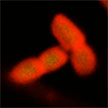 The antibiotic resistance crisis has been ascribed to the overuse and misuse of these medications, as well as a lack of motivation to develop new drugs. In the field of nanotechnology, a variety of innovative materials are being studied to evaluate their potential applications as antimicrobial agents. Recently, researchers have shown that boron nitride nanosheets as a nano-antibacterial agent displays antibiotic-like activities and BN nanosheets were found to show potent antibacterial efficiency in five multidrug resistant bacteria strains.
The antibiotic resistance crisis has been ascribed to the overuse and misuse of these medications, as well as a lack of motivation to develop new drugs. In the field of nanotechnology, a variety of innovative materials are being studied to evaluate their potential applications as antimicrobial agents. Recently, researchers have shown that boron nitride nanosheets as a nano-antibacterial agent displays antibiotic-like activities and BN nanosheets were found to show potent antibacterial efficiency in five multidrug resistant bacteria strains.
May 17th, 2022
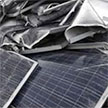 Researchers estimate that global PV module waste, 90% of which are made from crystalline silicon, will reach 1.7-1.8 million tonnes by 2030 and 60-78 million tonnes by 2050, which will likely reach the same order of magnitude as global electronic waste. A novel upcycling strategy adds value to this otherwise economically low-value waste silicon. With proper chemical doping, it allows silicon waste to be turned into high-performance thermoelectrics for heat energy harvesting.
Researchers estimate that global PV module waste, 90% of which are made from crystalline silicon, will reach 1.7-1.8 million tonnes by 2030 and 60-78 million tonnes by 2050, which will likely reach the same order of magnitude as global electronic waste. A novel upcycling strategy adds value to this otherwise economically low-value waste silicon. With proper chemical doping, it allows silicon waste to be turned into high-performance thermoelectrics for heat energy harvesting.
May 16th, 2022
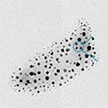 The two-dimensional carbon allotrope graphdiyne is capable of inhibiting broad-spectrum bacterial growth while exerting moderate cytotoxicity on mammalian cells. Researchers now demonstrate a high-performance bactericid with graphdiyne functionalized by silver nanoparticles. The material killed the bacteria through membrane destruction and reactive oxygen species production. These findings present an avenue to harness 2D materials to stabilize metal nanoparticles as a promising option for combating evolving bacteria.
The two-dimensional carbon allotrope graphdiyne is capable of inhibiting broad-spectrum bacterial growth while exerting moderate cytotoxicity on mammalian cells. Researchers now demonstrate a high-performance bactericid with graphdiyne functionalized by silver nanoparticles. The material killed the bacteria through membrane destruction and reactive oxygen species production. These findings present an avenue to harness 2D materials to stabilize metal nanoparticles as a promising option for combating evolving bacteria.
May 11th, 2022
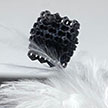 Using a combination of 3D printed template and self-assembly allows the fabrication of materials with complex Lego-like models with tailorable feature size crossing a record seven orders of magnitude - from nanometers to centimeters. This allows the fabrication of graphene structures with tunable mechanical properties, from super rigid (modules one order of magnitude higher than other ultralight materials) to superelastic (able to recover from extreme 95% compression).
Using a combination of 3D printed template and self-assembly allows the fabrication of materials with complex Lego-like models with tailorable feature size crossing a record seven orders of magnitude - from nanometers to centimeters. This allows the fabrication of graphene structures with tunable mechanical properties, from super rigid (modules one order of magnitude higher than other ultralight materials) to superelastic (able to recover from extreme 95% compression).
May 10th, 2022
 Decades of research on transition metal borides (TMBs) and their phases have led to a novel class of 2D transition metal borides termed MBenes - the boron-analogues of MXenes. Due to the very early stage of development, little is known about MBenes' physical and chemical properties, although excellent mechanical, electronic, metallic/semiconducting, capacitive, and thermoelectric properties have been theoretically predicted for them. However, even the most accurate theoretical predictions and optimistic predictions demonstrating MBenes' outstanding physical properties cannot be realized if researchers are not able to experimentally synthesize them - something the research community still is waiting for.
Decades of research on transition metal borides (TMBs) and their phases have led to a novel class of 2D transition metal borides termed MBenes - the boron-analogues of MXenes. Due to the very early stage of development, little is known about MBenes' physical and chemical properties, although excellent mechanical, electronic, metallic/semiconducting, capacitive, and thermoelectric properties have been theoretically predicted for them. However, even the most accurate theoretical predictions and optimistic predictions demonstrating MBenes' outstanding physical properties cannot be realized if researchers are not able to experimentally synthesize them - something the research community still is waiting for. 
 Subscribe to our Nanotechnology Spotlight feed
Subscribe to our Nanotechnology Spotlight feed





